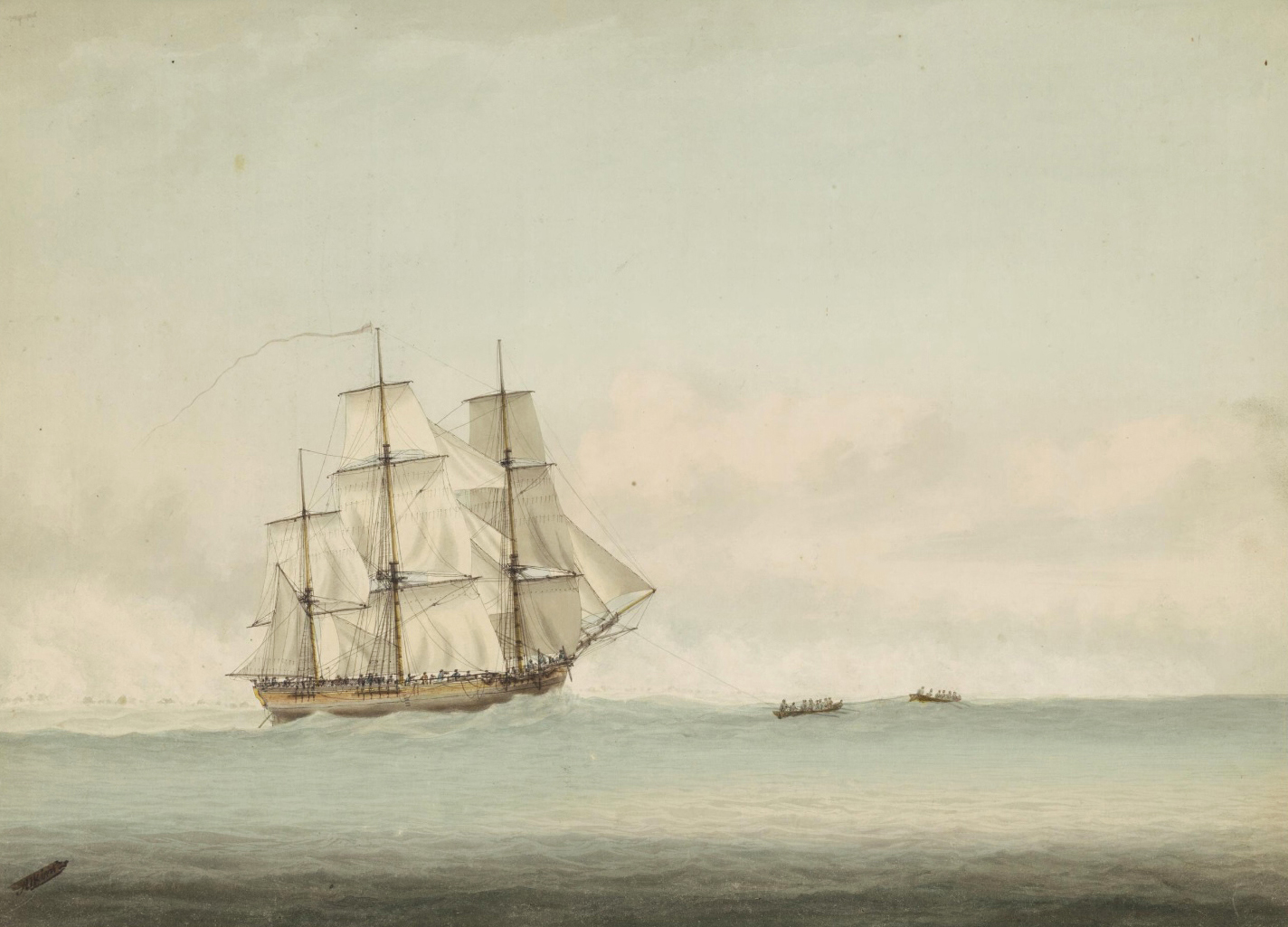http://en.wikipedia.org/wiki/Santa_Maria_%28ship%29 wrote:
<<The Santa Maria de la Inmaculada Concepción, (English: Saint Mary of the Immaculate Conception), was the largest of the three ships used by Christopher Columbus in his first voyage. Her master and owner was Juan de la Cosa. The Santa Maria was probably a small carrack, about 70 feet long, used as the flagship for the expedition. The other ships of the Columbus expedition were the smaller caravel-type ships Santa Clara, remembered as the Niña ("The Girl") and Pinta ("The Painted" – this might be a reference to excessive makeup). All these ships were second-hand and were never meant for exploration.
The Santa Maria was originally named La Gallega ("The Galician"), because she was built in Pontevedra, Galicia, in Spain's north-west. It seems the ship was known to her sailors as Marigalante, Spanish for "Gallant Maria". Bartolomé de Las Casas never used La Gallega, Marigalante or Santa Maria in his writings, preferring to use la Capitana or La Nao.
The Santa Maria had a single deck and three masts. She was the slowest of Columbus's vessels but performed well in the Atlantic crossing. She ran aground off the present-day site of Cap Haitien, Haiti on December 25, 1492, and was lost. Realizing that the ship was beyond repair, Columbus ordered his men to strip the timbers from the ship. The timbers from the ship were later used to build Môle Saint-Nicolas, which was originally called La Navidad (Christmas) because the wreck occurred on Christmas Day.
Columbus's crew on the first voyage was not composed of criminals as is widely believed. Many were experienced seamen from the port town of Palos and the surrounding countryside and coastal area of Galicia. It is true, however, that the Spanish sovereigns offered amnesty to convicts who signed up for the voyage, but only four men took up the offer: one who had killed a man in a fight, and three friends of his who had then helped him escape from jail.
There were some crew members from Andalusia, as the voyage was financed by a syndicate of seven noble Genovese bankers resident in Seville (the group was linked to Amerigo Vespucci and funds belonging to Lorenzo di Pier Francesco de Medici). Hence all the accounting and recording of the voyage was kept in Seville. This fact debunks the romantic story that the Queen of Spain had used a necklace that she had received from her husband the King, as collateral for a loan.>>
 Opportunity at Santa Maria Crater
Opportunity at Santa Maria Crater





